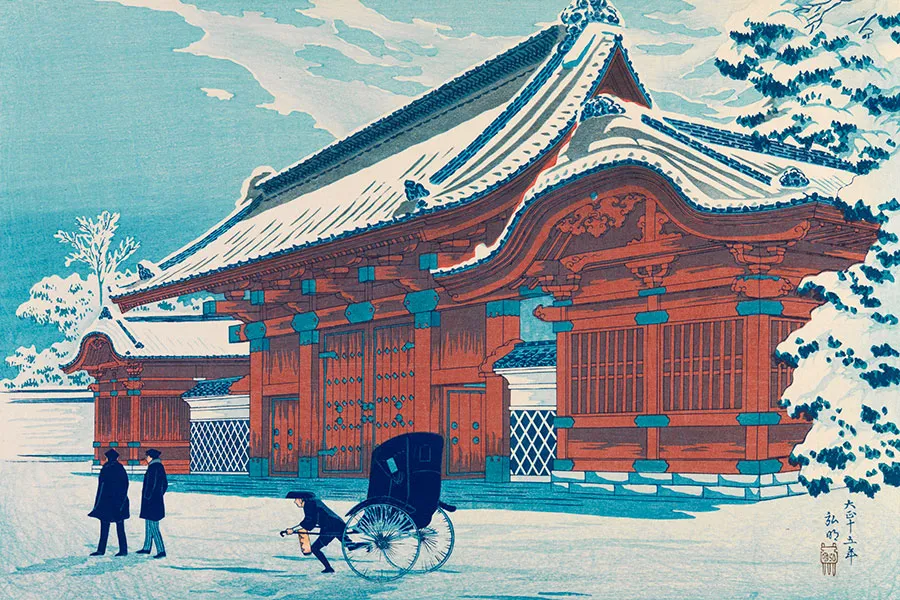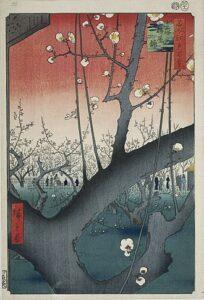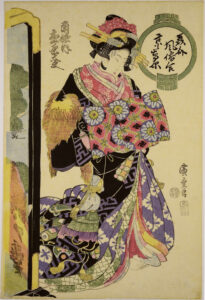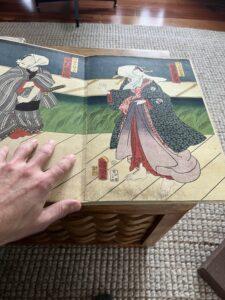from Le Japon Artistique (Artistic Japan) by VICTOR CHAMPIER. Originally published in the late 1800s.
Introduction: When studying woodblock prints from the 19th century, one gets a feel as if they are taking a walk through Old Japan. A place almost forgotten in today’s modern world in time and space. Japanese Architecture is apparent in woodblock print designs: from temples inked by Hiroshige, to the settings of Edo portrayed by Hokusai; the beauty of Japanese architecture is at once recognizable in Japanese art and should be noticed and appreciated. Please find a wonderful article as follows from the publication of Artistic Japan about the beauty and power of Japanese Architecture, which we find so featured so prominently in the woodblock prints we love and adore.
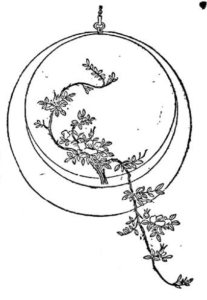 How long, solemn, and imposing the word “architecture” seems when applied to the frail and graceful constructions in which the fascinating people of Nippon dwell! My pen has just traced the word, and I at once feel distrustful of our European vocabulary, as being far too serious and matter-of-fact for translating the affectations and niceties of an art more delicate than anything of the sort with which we are acquainted. The sensation is exactly that which one experiences upon seeing some rare and fragile object grasped by rough hands which threaten every moment to destroy it. To my mind, whenever we speak of the Japanese, it ought to be understood that our language demands focussing to a special scale ; it must lose in breadth in order to gain in clearness if we are to preserve to the things we describe their true value, and to faithfully represent the pictures of a country where everything appears on a scale entirely different in proportion to all that we have hitherto been accustomed to.
How long, solemn, and imposing the word “architecture” seems when applied to the frail and graceful constructions in which the fascinating people of Nippon dwell! My pen has just traced the word, and I at once feel distrustful of our European vocabulary, as being far too serious and matter-of-fact for translating the affectations and niceties of an art more delicate than anything of the sort with which we are acquainted. The sensation is exactly that which one experiences upon seeing some rare and fragile object grasped by rough hands which threaten every moment to destroy it. To my mind, whenever we speak of the Japanese, it ought to be understood that our language demands focussing to a special scale ; it must lose in breadth in order to gain in clearness if we are to preserve to the things we describe their true value, and to faithfully represent the pictures of a country where everything appears on a scale entirely different in proportion to all that we have hitherto been accustomed to.
Japanese Architecture! Can we call it by the same term as Greek Architecture, Roman Architecture, Gothic Architecture ?What !must the same word include colossal constructions of stone, marble monuments which defy the centuries, and the airy temples, and the little houses made in wood and paper, more like bonbonnières with movable divisions, minute boxes ingeniously arranged, and coming to pieces like toys! Yes, though all that difference exists, the term is the right one, and we must keep to it, even if our language could furnish us with a diminutive having the same sense.
and the airy temples, and the little houses made in wood and paper, more like bonbonnières with movable divisions, minute boxes ingeniously arranged, and coming to pieces like toys! Yes, though all that difference exists, the term is the right one, and we must keep to it, even if our language could furnish us with a diminutive having the same sense.
For, if the definition holds good, which says that architecture is the material expression of the desires and the manners of a people ; that the style of building is the exterior form of the ideas, genius, and religion of a nation, we must agree that the Japanese possess an architecture admirably fitted to the character of their civilization, wonderfully appropriate to the conditions of their climate, and which shows the elements of beauty which we are accustomed to look for in this art, namely, unity and harmony, in its varied forms no less than any European style. It would, be astonishing were it otherwise—that a people like this, which has revealed itself to us in so brilliant a manner by the wonders of industry, which we can never cease to admire, which in the smallest objects of everyday use can put such consummate art, so much character and such perfection, could have built for themselves homes without grace, or for their gods, temples without design.
 What are the distinguishing characteristics of this Japanese architecture—what are the rules of its structure, the logic of its composition ? These points I would briefly explain, and they come with much appropriateness at the commencement of a review devoted to the study of Japanese Art.
What are the distinguishing characteristics of this Japanese architecture—what are the rules of its structure, the logic of its composition ? These points I would briefly explain, and they come with much appropriateness at the commencement of a review devoted to the study of Japanese Art.
For to architecture (being as it is a manifestation of one of the first wants of man, namely, shelter and comfort) one must go if it is desired to find out the generative principles of those other arts which follow, and are derived from it, and are less rigorously in bondage to strict laws of reason. But before one begins to speak of the picturesque aspect of the constructions and forms, which are the consequence of social habits, and are peculiar to the race, it is necessary to remember clearly certain fundamental laws of a peculiar nature to which Japanese architecture has been subjected, and which have governed its development and limited its range.
 There are two principal factors which in all countries exercise an influence on the fashion of architecture, but which do so in a still greater degree in Japan than elsewhere—I refer to the climatic condition and the nature of the soil.
There are two principal factors which in all countries exercise an influence on the fashion of architecture, but which do so in a still greater degree in Japan than elsewhere—I refer to the climatic condition and the nature of the soil.
The climate of Japan is of the most variable nature: although in the centre of the country the cold is very great in winter, in the south it is hardly felt at all. Everywhere rains are frequent, especially from the end of the month of April till the month of June, and they are followed by a long period of heat. It has therefore been necessary to construct habitations to serve as shelter both against the rain and the sun, and which will suit both a quiet indoor life and a life in the open air.
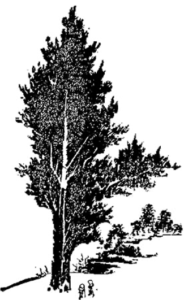
From this cause have originated the special forms given to the houses : those great roofs with the broad eaves, which give shade from the sun and shelter from the rain; the balconies and the terraces ; the great recesses which form windows, which can be opened more or less, and are closed by means of frames running in grooves ; the gardens, full of freshness, forming a frame of verdure to nearly every house.
As to the other factor, it is even more exacting : the volcanic soil of Japan, and the constant earthquakes resulting from it, have from time immemorial necessitated the almost exclusive use of wood in constructions. The whole explanation of Japanese architecture lies in this fact. It is from the nature of the materials that the choice of forms has arisen. It is from this obstacle that the whole design of the art has  sprung. Edifices of an extreme elasticity were a necessity, capable of resisting the storms of wind and of standing upright in spite of the severest earthquake shocks. The genius of the Japanese has triumphed over these difficulties. Their architects have built temples, of which some are a thousand years old and are standing intact.
sprung. Edifices of an extreme elasticity were a necessity, capable of resisting the storms of wind and of standing upright in spite of the severest earthquake shocks. The genius of the Japanese has triumphed over these difficulties. Their architects have built temples, of which some are a thousand years old and are standing intact.
Obliged to abandon stone—of which there is abundance in the country, in spite of what one has been given to understand—in favour of wood, they have executed marvels of elegance, richness, and solidity. What was a difficulty in structure they have turned into an element of decoration ; from obstacles which might have paralysed them they have produced unlooked-for and beautiful
Examine from this standpoint any structure in Japan, and you will easily be able to account for the place that this idea of resistance has held in the arrangements of the architect, and how he has made the best of the materials he was obliged to use with infinite taste.
You will understand at the same time why there are often no foundations to the houses—why the curves of the supports have one form rather than another—why window-panes, which might offer danger when broken to pieces, are replaced by paper. The foundations, if affixed to the earth, would ensure the destruction of the building at the least movement of the volcanic soil. They therefore consist merely of stone pedestals, thick and strong, on which are placed wooden supports which bear the edifice, at the same time leaving at its base a small empty space between the pedestal and the wood, so as to satisfy the two following conditions : —First, if the building were to receive a shock, not being fastened to the pedestal it could not be broken ; it keeps it elasticity, and after the oscillation, falls into its place again ; further, at the time of the heavy rains, the water passes under the supports without the wood getting wet, thus preserving it from dampness. One of the most ancient buildings of Japan, the temple of the Goddess Kwan-non, at Nara, which contains the treasures of the Mikado, is built on this system : its supports are elevated not to the height of several 4 inches, but more than a yard, like piles. It dates back more than 1 200 years, and has not stirred at all. Secondly, in consequence of this principle, the roofing, which plays such a great part in Japanese architecture, is alway heavy and of large dimensions, made with the greatest care, in order that it may assure the equilibrium of the erection which is not fastened, and which in consequence could easily be turned over.
small empty space between the pedestal and the wood, so as to satisfy the two following conditions : —First, if the building were to receive a shock, not being fastened to the pedestal it could not be broken ; it keeps it elasticity, and after the oscillation, falls into its place again ; further, at the time of the heavy rains, the water passes under the supports without the wood getting wet, thus preserving it from dampness. One of the most ancient buildings of Japan, the temple of the Goddess Kwan-non, at Nara, which contains the treasures of the Mikado, is built on this system : its supports are elevated not to the height of several 4 inches, but more than a yard, like piles. It dates back more than 1 200 years, and has not stirred at all. Secondly, in consequence of this principle, the roofing, which plays such a great part in Japanese architecture, is alway heavy and of large dimensions, made with the greatest care, in order that it may assure the equilibrium of the erection which is not fastened, and which in consequence could easily be turned over.
The quantity of wood used in making the roofs and ceilings of certain temples in Japan is extraordinary. One is inclined to believe there must be waste ; but all is minutely calculated—each beam has its place, each mortice its reason, and each support some object. Some ancient pagodas exist of such an elevation that one wonders how it is possible they have stood till now, in spite of earthquakes ; it is because of the ingenuity of the framework. There are some where one sees a central pillar of wood, which in the interior is carried to the top and seems to support the roof. This would be by no means the object of such a pillar in our architecture. In Japan, things are reversed, and this pillar, far from carrying the roof, is actually supported by it ; it is, as it were, a prolongation of it ; it does not rest on the ground, as one would suppose ; it is separated from it by a hardly noticeable interstice ; yet it is nevertheless to this that the service is allotted of keeping the centre of gravity of the combined strength of the beams of the roof. In the same way for the characteristically-formed supports, which constitute the entablature, or form the extraordinary projections of some considerable size that one remarks on most Japanese temples ; they are formed of little beams from 10 to 12 inches long, with bent ends which are laid together and bound one to another, having regular spaces left between each : from a distance one might compare them to the meshes in a net. Evidently these supports also originated in the danger of earthquake, and they answer the problem of elasticity, lightness, and solidity, of which it was necessary to find a solution. Nothing can be more ingenious and typical.
In the train of these natural and weighty reasons which have ruled the principles of Japanese architecture, come religious influences ; but in this case there is no question of construction or dependence on climate. Style, ornament, and decoration have to be considered in connection with the particular intellect of the people, its primitive beliefs —in a word, all that which connects itself with its intellectual and moral development—to the vicissitudes in its history, to the influence exercised on it by other races. It is a question of determining in  what measure it has departed from its original sources, and to what extent it has had recourse to borrowing. But such a study is surrounded with difficulties so far as regards Japan, for although it has been of late years the object of learned research, much is still hidden in obscurity. All that one can say in a general way is, that the architecture of Japan is the expression of a complicated Theogony, increased by myths more or less varied, which have furnished nearly all its motives of decoration, and that it corresponds to two distinct cults—Shintoism or the national religion, and Buddhism, imported from India about the seventh century of our era. The Shintoist temples and monuments present marked differences from those of the Buddhists : they are more simple, and of a more unaffected simplicity, and can be recognised by their very singular details of construction. A feature which characterises the architecture of the nations of the extreme East is, that it seems derived from the conception of a tent with its corners raised up and pointed at its summit ; but whereas in China the original form of this tent sprang from a cloth thrown over a central pole which it covered in a circle, in Japan, on the contrary, it arose from a cloth thrown over two poles tied together in the form of a St. Andrew’s Cross at their upper extremity. Shintoist architecture—in order, no doubt, to preserve the tradition of this primitive construction—has left on the roof of temples two beams crosswise, which are by no means
what measure it has departed from its original sources, and to what extent it has had recourse to borrowing. But such a study is surrounded with difficulties so far as regards Japan, for although it has been of late years the object of learned research, much is still hidden in obscurity. All that one can say in a general way is, that the architecture of Japan is the expression of a complicated Theogony, increased by myths more or less varied, which have furnished nearly all its motives of decoration, and that it corresponds to two distinct cults—Shintoism or the national religion, and Buddhism, imported from India about the seventh century of our era. The Shintoist temples and monuments present marked differences from those of the Buddhists : they are more simple, and of a more unaffected simplicity, and can be recognised by their very singular details of construction. A feature which characterises the architecture of the nations of the extreme East is, that it seems derived from the conception of a tent with its corners raised up and pointed at its summit ; but whereas in China the original form of this tent sprang from a cloth thrown over a central pole which it covered in a circle, in Japan, on the contrary, it arose from a cloth thrown over two poles tied together in the form of a St. Andrew’s Cross at their upper extremity. Shintoist architecture—in order, no doubt, to preserve the tradition of this primitive construction—has left on the roof of temples two beams crosswise, which are by no means essential to the structure, but are simply there as the remains of ancient custom.
essential to the structure, but are simply there as the remains of ancient custom.
VICTOR CHAMPIER.
Click here to see our full Japanese woodblock print selection for sale.

